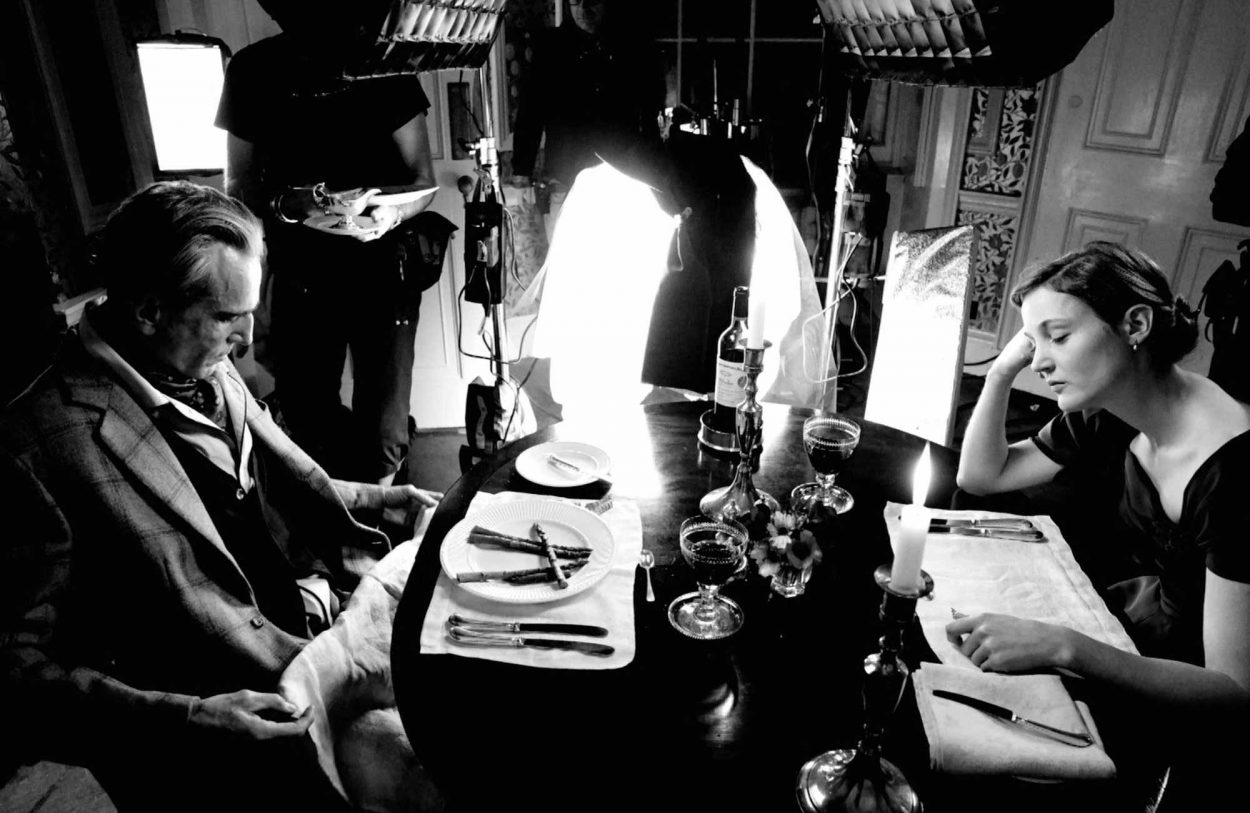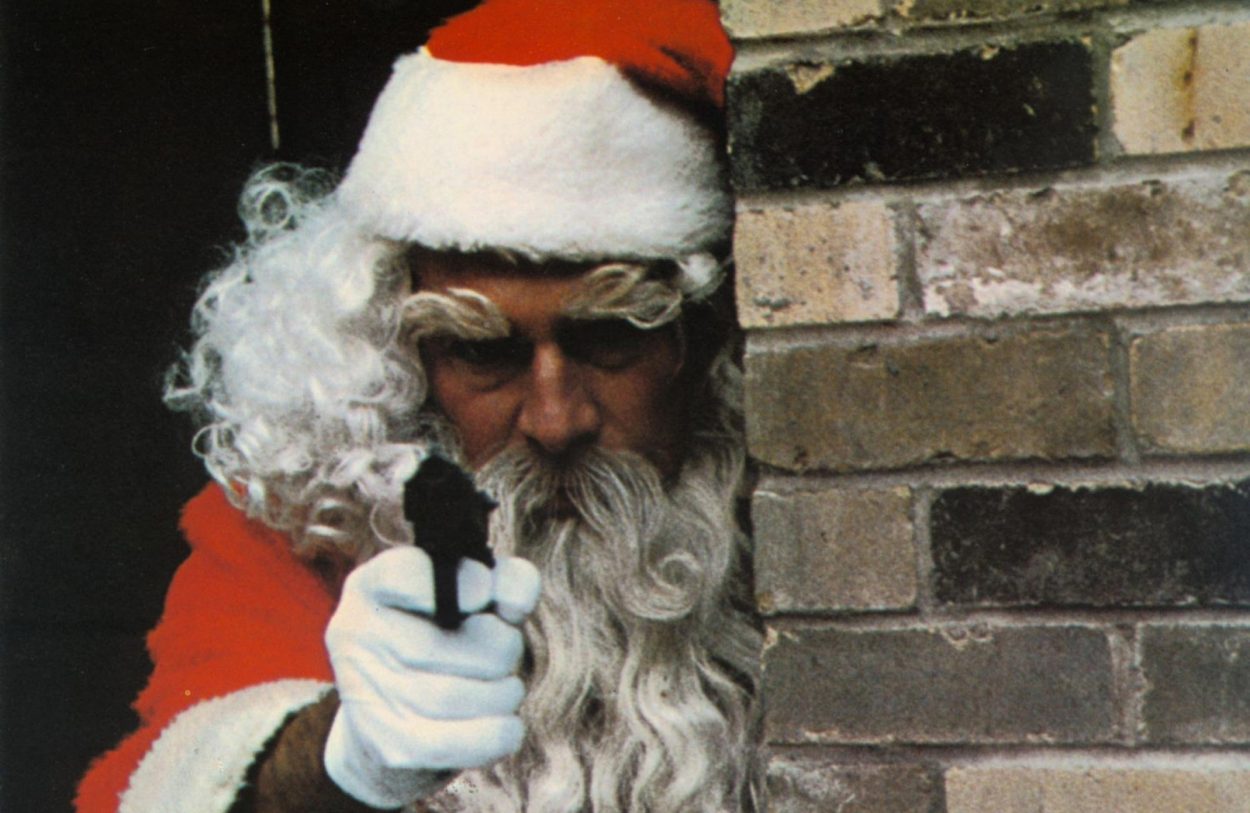The film that made Paul Schrader’s name as a screenwriter in Hollywood was his script for the Japanese set gangster film The Yakuza, which takes a current (70’s) popular Japanese film genre (Yakuza gangster films) and the genre’s most popular star (the smoldering Ken Takakura), and crafts it for western consumption by adding Robert Mitchum.
Schrader told Brett Easton Ellis, “We [Paul and his brother Leonard] had written a Yakuza gangster movie in the Toei Studio gangster tradition.” At the end of that script, the Schraders give us the first of Paul’s blood-all-over-the-walls climaxes to reach the screen. Takakura Ken takes on his Japanese opponents, shirtless, green dragon tattoo covering his muscled back, with a samurai sword, while Big Bob Mitchum blasts through rice paper walls with a double barrel shotgun. Talk about East meets West!Even Scorsese admitted that Travis’ final bloodbath at the end of Taxi Driver was motivated by a sense of bushido honor; “Paul saw it was a kind of samurai death with honor – that’s why DeNiro attempts suicide.” Schrader even felt Scorsese’s final bloodbath wasn’t bloody enough. Scorsese said: “He felt that if he directed the scene, there would have been tons of blood all over the walls, a more surrealistic effect,” like Japanese movies. The Japanese way is to exaggerate and emphasize thus making surreal.”
The general word on The Yakuza, from both Schrader and the big deal critics of its day, was that director Sydney Pollack was not the man for the job. Pauline Kael spent about thirty percent of her review listing all the filmmakers who would have been better suited for this property. Pollack wasn’t perfect casting for the project. Nevertheless The Yakuza remains a unique, nifty 70’s gangster thriller with two great action stars being outstanding.Mitchum through the rest of the 70’s and 80’s would periodically do effective work (I especially like his turn as John Savage’s father in Andrei Konchalovsky’s Maria’s Lovers). But more often than not, in whatever role he was playing – movie studio executive in The Last Tycoon, tv executive in Scrooged, advertising executive in Agency – he played an oak tree. In Farewell, My Lovely he played an oak tree in a snap brim fedora. It’s exemplified by watching all twelve hours of his starring performance in the eighties mini-series Winds of War (you always felt sorry for Victoria Tennant whenever they made her kiss him). But in The Yakuza, for the last time as a lead, Mitchum was vibrantly alive. Apparently, Pollack stressed the The Way We Were aspect of the love story inside the Yakuza story (Mitchum and dignified Kishi Keiko play reunited lovers from World War II.) But that aspect of the story is one of the film’s most effective features. And that’s mostly due to the romantic, moony, wounded bear quality that Mitchum brings to the role.Takukara Ken became a superstar in Japan after starring in the stark, stylistic black and white snow-set prison escape adventure Abashiri Bangaichi. Directed by tough guy mystro Teruo Ishii, who Ken shared an artistic relationship with similar to Don Siegel and Clint Eastwood’s. Abashiri Bangaichi would eventually produce a fourteen film Japanese action film series (I’ve only seen the first one, without sub-titles, and it’s terrific). While Ken is one of the most iconic stars in the history of Japanese cinema, and even though he’s done a few other international productions (Too Late the Hero, Black Rain, Mr. Baseball), most western audiences only know him from this movie. But in The Yakuza he delivers such a perfect presentation of his persona that it’s all you really need to know. And this comes after a period of a few international productions (Hell in the Pacific & Red Sun) that featured Toshiro Mifune, and Mifune seemed less than. So Takakura Ken’s powerhouse performance, at the height of his fame, in this Hollywood Yakuza flick, seems even more of a triumph.
Now according to Schrader, The Yakuza original director was Robert Aldrich. Which theoretically seems perfect. I say theoretically, because theoretically Aldrich should have been perfect for Emperor of the North. But instead of the muscular rusty claw hammer type direction you’d expect from the big man, Aldrich gives into corny thirties theatrics. The film seems more like a Damon Runyonesque musical about hobos than the crowbar vs. chain donnybrook that MGM sold it to audiences as. But in the end, the two Bobs (Mitchum & Aldrich) couldn’t get along. Aldrich probably still resented Mitchum’s non-performance in his WWII Greek resistance compromised failed epic The Angry Hills. So Pollack was enlisted.
It wasn’t that Pollack wasn’t up to the action in the picture. His comedy western The Scalphunters holds up better these days than a lot of Sydney’s better-known movies. Redford’s fight with the assassin disguised as a postman in the Christmas-tree-sporting living room in Three Days of the Condor predates a lot of the spectacular fights to come out of Hong Kong in the eighties. And the swordplay – shotgun action in The Yakuza’s rousing vengeance climax is well done. And considering the film was made at Warner Brothers, the same studio that made Enter The Dragon, Schrader should be counting his lucky stars that Robert (clod) Clouse didn’t get assigned to his Asian-western project. It’s just you wish a director with a greater facility with pulp (Aldrich, Don Siegel, Phil Karlson, Ralph Nelson), or a director with the sensibility to turn pulp into art (Peckinpah, Polanksi, Joseph H. Lewis) had been in charge.
Pollack was the top of the line when it came to popular Hollywood studio picture makers who worked well with big stars. Pollack was neither the artist or the storyteller that George Roy Hill was. But Hill aside, when compared to his other Hollywood picture maker contemporaries, Pollack was the class act. I prefer him to Frankenheimer, Lumet, Hiller, Huston, and even Arthur Penn.
But Pollack was a tasteful Hollywood picture maker. And his tasteful sensibility required Pollock to insist on a rewrite to John Milius’ original script for Jeremiah Johnson that jettisoned the more outrageous Milius moments. And that same sensibility was at work with the Schrader brothers’ script for The Yakuza. Sydney even brought in big gun scribe Robert Towne to do his own polish.
I knew a fellow who ran a second run movie house in Redondo Beach, California, called the Marina 3 (long since defunct). And The Yakuza was his favorite movie, which he would screen once or twice a year, on the lower half of his double bills, all throughout the eighties.
And the film’s final coda, “The Finger cutting scene,” is, for me, one of the great endings of any movie of its era. And arguably Mitchum’s single greatest acting moment on film (as long as some fuckwad in the cinema doesn’t laugh during it).


